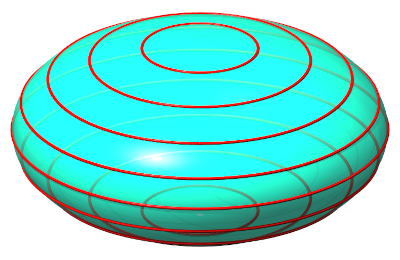
| next surface | previous surface | 2D curves | 3D curves | surfaces | fractals | polyhedra |
ELLIPSOID OF REVOLUTION
| Other name : spheroid. |
I) Oblate ellipsoid of revolution.

| Rotation of an ellipse around its minor axis Oz.
Cylindrical equation: Cartesian parametrization: First fundamental quadratic form: Area element: Main radius of curvature: Gauss curvature: Area : |
The oblate ellipsoid of
revolution is the surface of revolution
obtained by rotating the ellipse around its minor axis, having the shape
of a pebble or a flying saucer, or also a go stone.
| Opposite, views of closed geodesics
of the oblate spheroid, corresponding to some "turcs
head-knots" with 3, 8, 15 crossings.
Differential system whose solutions give these geodesics: |
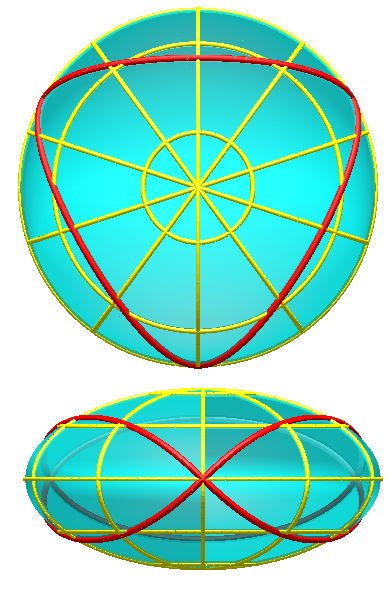 |
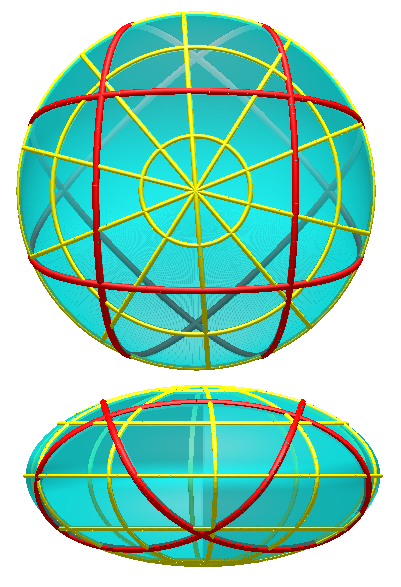 |
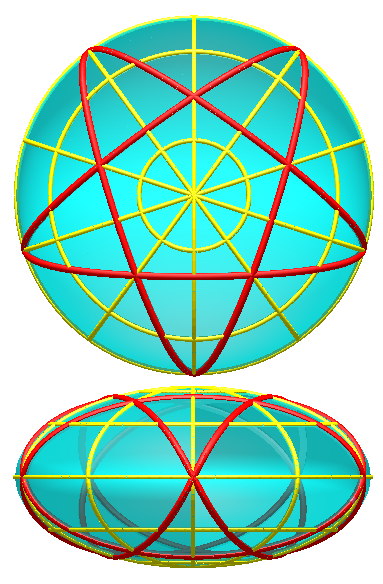 |
II) Prolate ellipsoid of revolution.
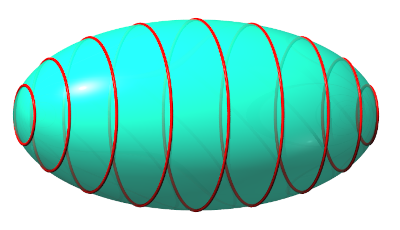
| Rotation of an ellipse around its major axis Oz.
Cylindrical equation: For the other formulas, use those in the previous box by exchanging a and b, except for Aire : |
The prolate ellipsoid of
revolution is the surface of revolution
obtained by rotating the ellipse around its major axis, having a shape
of a
cigar or rugby ball.
| Opposite, views of four closed geodesics of the prolate
spheroid.
With above-below crossings, the second gives a figure eight knot, the third gives a knot with 9 crossings 9.1.40, and the fourth a knot with 12 crossings 12.1.1019. |
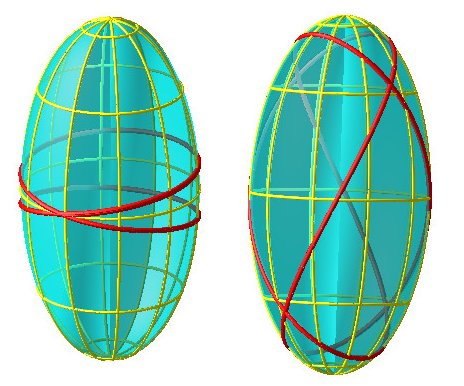 |
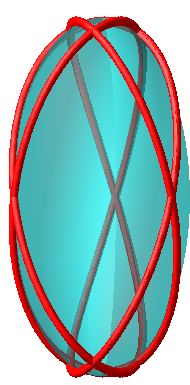 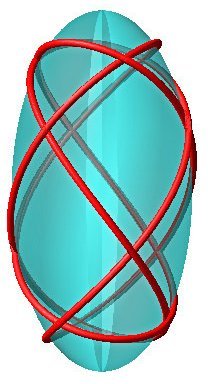 |
Compare these geodesics with these of
the torus.
| next surface | previous surface | 2D curves | 3D curves | surfaces | fractals | polyhedra |
© Robert FERRÉOL 2021